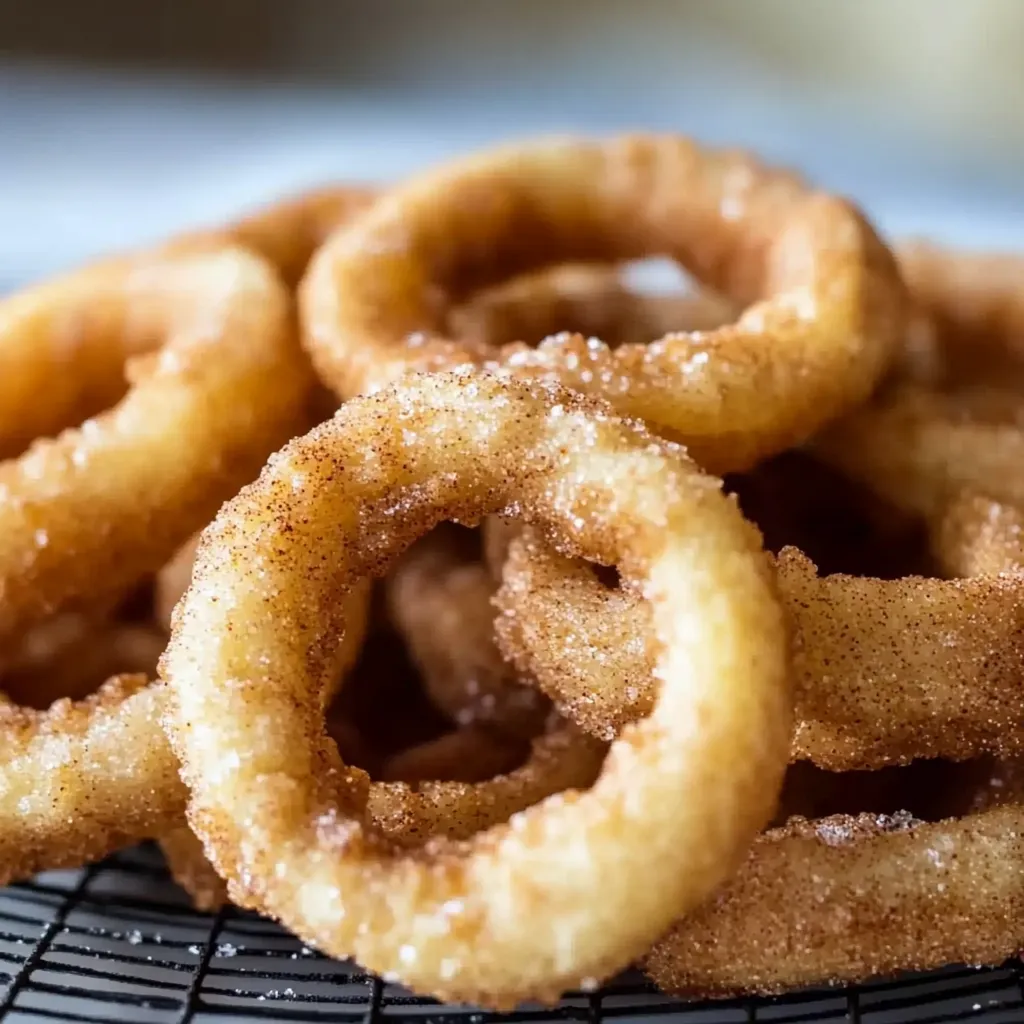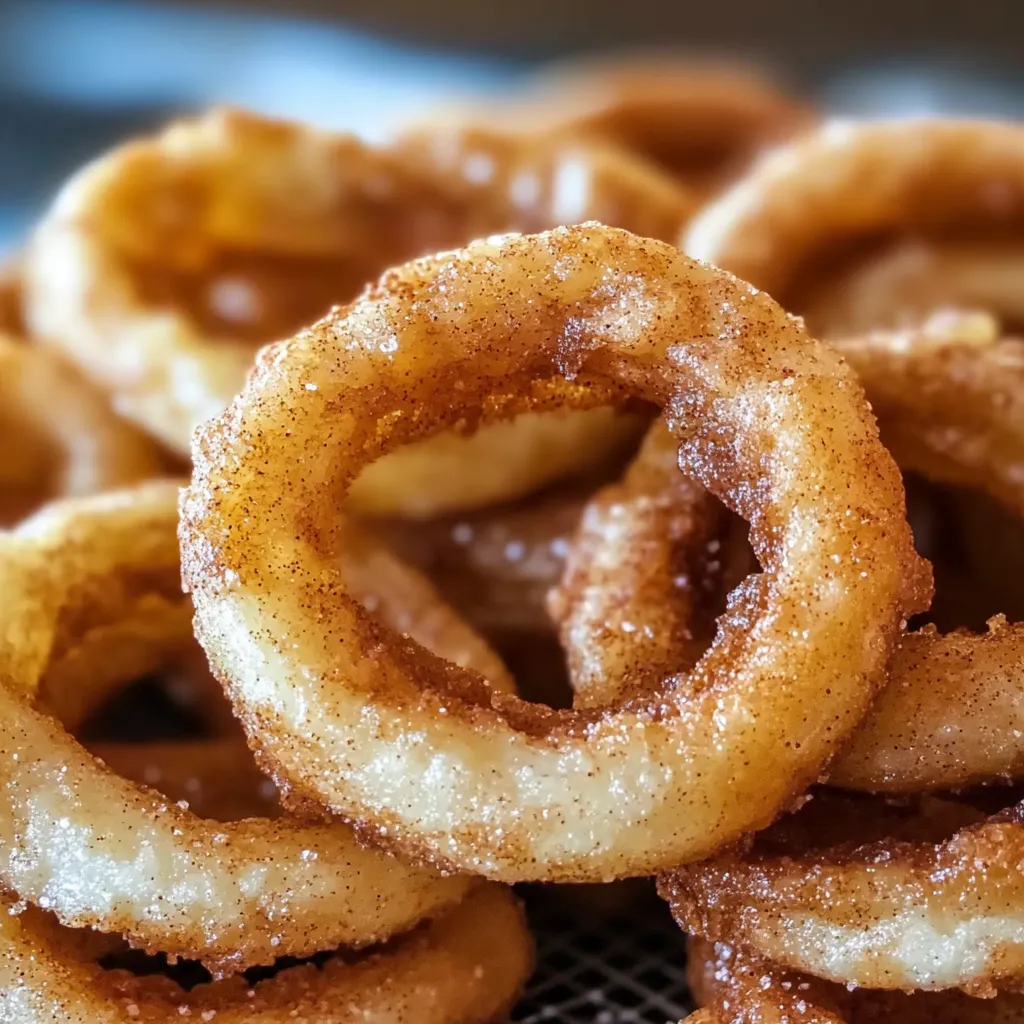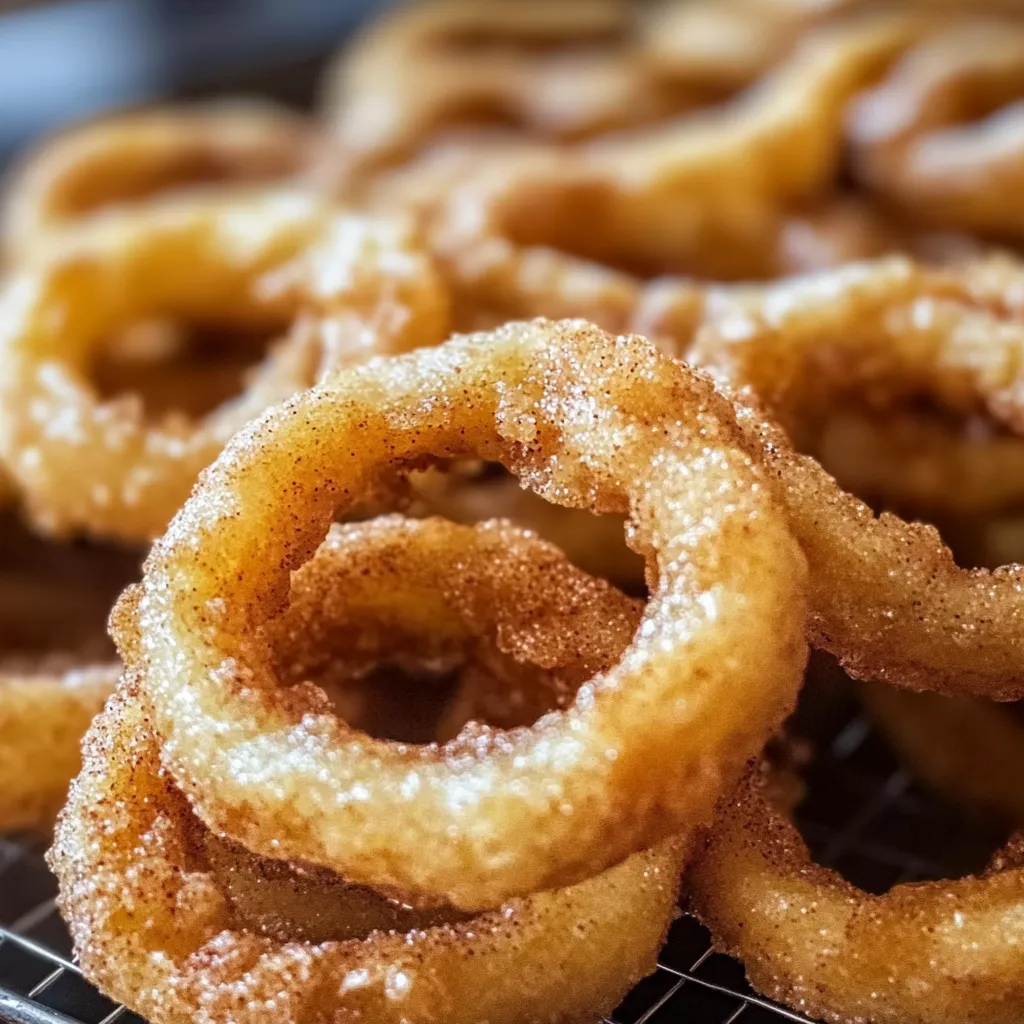 Pin
Pin
Light, crispy rings of soft apple wrapped in airy, crunchy batter and coated with a sweet cinnamon-sugar mix make an amazing breakfast that's way better than regular morning food. These tempting apple rings hit just the right spot between treat and healthy eating, giving you the yummy feel of donuts with the goodness of real fruit inside.
We stumbled on these apple rings during a fall trip to an orchard when the kids wanted to try something special with all the apples we'd picked. After trying out many different batters and methods, everyone agreed this recipe was the best. Now we can't start our weekends without Jack's careful dipping work and Aliana sprinkling what she calls her "magic cinnamon dust" - little family moments that bring us all together before we start our day.
Perfect Ingredient Choices
- Fresh Apples: Go for hard types with good sweetness like Honeycrisp, Pink Lady, or Gala. They won't fall apart when cooked and have natural sweetness that works great with the cinnamon topping.
- Buttermilk Batter: True buttermilk makes the coating super tender with a slight tang. It works with the rising agents to make that light, crispy shell that sticks well to the apple pieces.
- Cinnamon Sugar Mixture: Mix fine regular sugar with good Ceylon cinnamon for your coating. This type of cinnamon has deeper, richer flavors without the harsh taste you get in cheaper kinds.
- Plain Cooking Oil: Use an oil that can take high heat and doesn't have much taste, like vegetable or canola. The plain flavor lets the apple and cinnamon tastes come through without fighting them.
- Rising Agent Mix: The right amount of baking powder and baking soda creates the perfect bubbles in your batter. This makes sure your coating gets crispy without soaking up too much oil.
Nailing The Method
- Getting Apples Just Right
- Start with cold, firm apples for easier cutting. Take out the middle with an apple corer, then cut flat across into rings about ¼-inch thick. Making all slices the same thickness means they'll all cook evenly without some being too soft or too hard. Lightly dry the slices with paper towels to get rid of extra juice, which helps the batter stick better and stops oil from popping during cooking.
- Getting Batter Just Right
- Mix all dry stuff first before slowly adding buttermilk. Your batter should stick to the back of a spoon while slowly dripping off - too thick makes doughy coating; too thin won't stick right. If needed, add tiny bits of buttermilk or flour to fix it. Let the batter sit for 10 minutes before using, which builds up the gluten for better crispiness.
- Watching Oil Temperature
- Heat oil to exactly 350°F using a thermometer. This exact heat matters a lot - too cool makes soggy, oily rings, too hot burns the outside while the apple stays hard. Keep heat steady by cooking small amounts at once, letting oil heat back up between batches. Use enough oil so rings can float freely without touching the pan bottom where they might stick or cook unevenly.
- Smart Dipping Method
- Dip each apple ring in batter one at a time, letting extra drip off for 3-5 seconds. Put each ring into oil carefully, moving your hand away to avoid splashes. Cook for 2 minutes first side until golden, then carefully flip with tongs and cook another 1-2 minutes until evenly browned. This two-step cooking makes sure both the apple and coating cook properly.
- Best Finishing Touches
- Put fried rings on a wire rack over paper towels, which lets oil drain away while keeping them from getting soggy on paper. While still hot, quickly roll rings in cinnamon sugar mix. The heat slightly melts the sugar, making a crystal-like coating that sticks perfectly to the crunchy outside. Serve right away for the best contrast between crispy coating and soft apple.
 Pin
Pin
My grandma always told me the key to great fried food is paying attention to the oil. "Look at the bubbles," she'd say, "they'll tell you everything you need to know." She taught me that wild, crazy bubbling means your oil's too hot and you'll end up with burnt outsides and raw insides. The steady, even bubbling at 350°F makes that perfect golden color that makes these apple rings so good.
Ways To Serve
Set them out on a warm plate to keep them nice longer. Add vanilla bean dip on the side for fancy serving. Make a fun apple ring station with different toppings like maple syrup, chopped nuts, or chocolate sauce.
Fun Twists To Try
- Mix apple pie spice into the batter for richer flavor
- Add orange zest to the cinnamon sugar coating
- Try savory versions with herbs and parmesan cheese
- Pour reduced apple cider over top as a glaze
Keeping Leftovers
These taste best when you eat them right away while the texture's perfect. If you must save some, keep leftover rings uncovered at room temperature for up to 2 hours. Warm them in a 350°F oven for 3-5 minutes to get some crunch back, but they'll never be as good as when they're fresh.
These Crispy Cinnamon Apple Rings show how simple ingredients can turn into something amazing. Making this awesome breakfast isn't just about the food - it's about starting traditions that bring your family together in the kitchen and create memories that last way longer than the yummy taste of that perfect bite.
 Pin
Pin
Recipe Questions & Answers
- → Which apples hold up best for frying?
- Harder types like Fuji, Honeycrisp, or Granny Smith are great since they keep their structure and don’t go overly soft. Granny Smith adds a nice tangy balance to the sweetness.
- → Can this be made without a fryer?
- Of course! Use a deep skillet or sturdy pot instead. Just ensure there’s a couple of inches of oil and aim for 350°F throughout.
- → What’s the ideal thickness for apple slices?
- Cut them between 1/4 and 1/3 inch thick. If they’re too thin, they’ll fall apart; too thick, and the batter might finish before the apple softens.
- → Is there an alternative to buttermilk?
- Yep, mix 1 tablespoon of lemon juice or vinegar into a cup of milk and let it rest for about 5-10 minutes. You’ll get a similar result.
- → How can I avoid soggy apple rings?
- Eat them fresh! If they need to wait a bit, keep them warm on a wire rack in a 200°F oven, but they’re best enjoyed right after frying.
